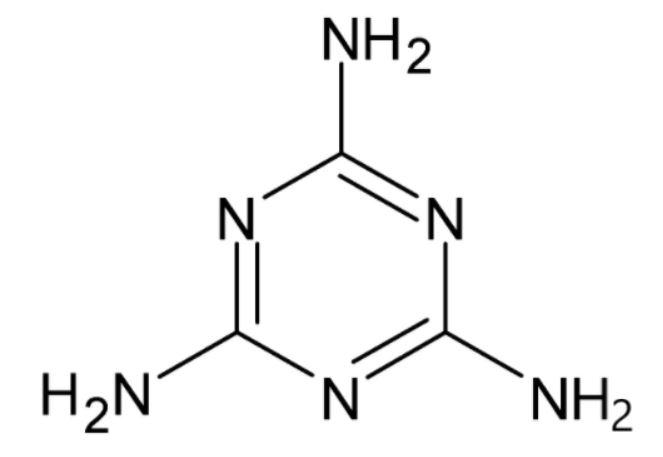
What is the empirical formula of melamine?
Answer
425.4k+ views
Hint: We know that the empirical formula provides the idea about the lowest whole number ratio in which atoms are exiting in the compound. It does not give any idea about the arrangement of the atoms in the compound. It is the relative ratio of elements in a compound.
Complete answer:
The empirical formula is the simplest integer ratio in which atoms combine. The relative number of atoms in the compound is explained by considering the empirical formula. The Empirical formula can be calculated by following steps:
- Start with the number of grams of each element of the compound given in the problem (If percentages are given, assume that the total mass is grams so that the mass of each element will be equal to the percentage given)
- Convert the mass of each element into moles using the molar mass of the respective elements from the periodic table.
- Divide the value of each mole by the smallest number of moles calculated.
- Round to the nearest whole number. This is the mole ratio of the elements and is represented by subscripts in the empirical formula.
- If the number is too far to round up, then multiply each solution by the same factor to get the lowest possible whole number multiple.
1.

The molecular formula is
Note:
Remember that don't get confused between molecular formula and empirical formula. Empirical formulas show the simplest whole-number ratio of atoms in a compound whereas molecular formulas show the number of each type of atom in a molecule.
Complete answer:
The empirical formula is the simplest integer ratio in which atoms combine. The relative number of atoms in the compound is explained by considering the empirical formula. The Empirical formula can be calculated by following steps:
- Start with the number of grams of each element of the compound given in the problem (If percentages are given, assume that the total mass is grams so that the mass of each element will be equal to the percentage given)
- Convert the mass of each element into moles using the molar mass of the respective elements from the periodic table.
- Divide the value of each mole by the smallest number of moles calculated.
- Round to the nearest whole number. This is the mole ratio of the elements and is represented by subscripts in the empirical formula.
- If the number is too far to round up, then multiply each solution by the same factor to get the lowest possible whole number multiple.
1.

The molecular formula is
Note:
Remember that don't get confused between molecular formula and empirical formula. Empirical formulas show the simplest whole-number ratio of atoms in a compound whereas molecular formulas show the number of each type of atom in a molecule.
Recently Updated Pages
Master Class 9 General Knowledge: Engaging Questions & Answers for Success

Master Class 9 English: Engaging Questions & Answers for Success

Master Class 9 Science: Engaging Questions & Answers for Success

Master Class 9 Social Science: Engaging Questions & Answers for Success

Master Class 9 Maths: Engaging Questions & Answers for Success

Class 9 Question and Answer - Your Ultimate Solutions Guide

Trending doubts
State and prove Bernoullis theorem class 11 physics CBSE

What are Quantum numbers Explain the quantum number class 11 chemistry CBSE

Who built the Grand Trunk Road AChandragupta Maurya class 11 social science CBSE

1 ton equals to A 100 kg B 1000 kg C 10 kg D 10000 class 11 physics CBSE

State the laws of reflection of light

One Metric ton is equal to kg A 10000 B 1000 C 100 class 11 physics CBSE




